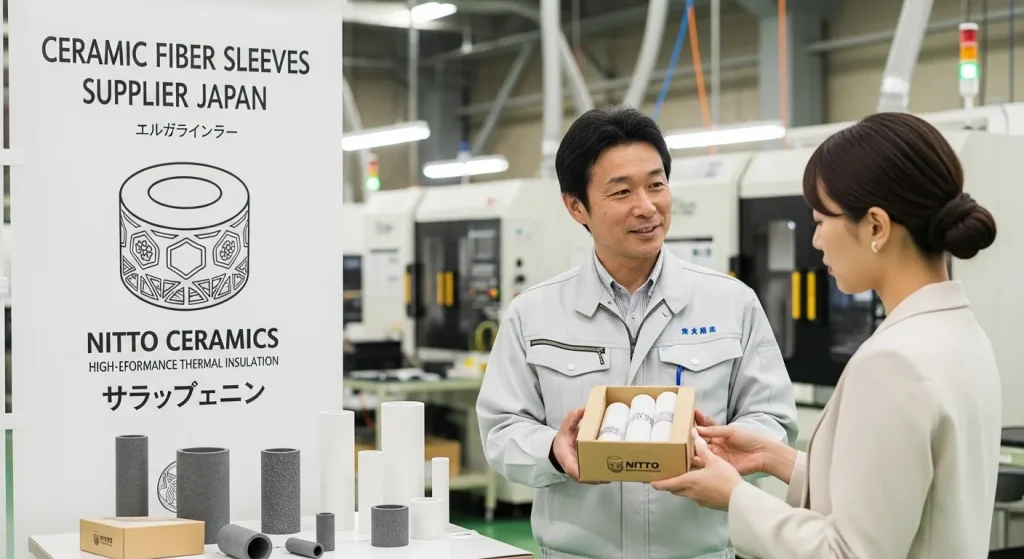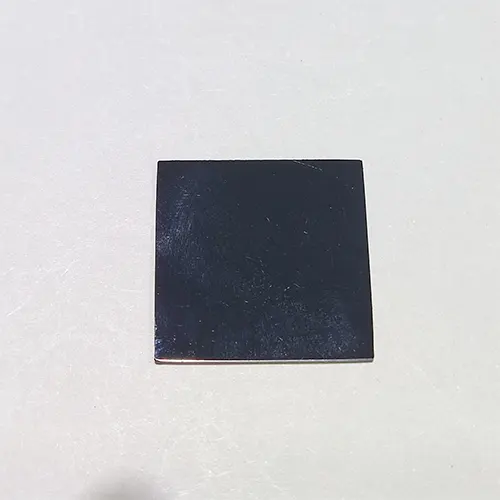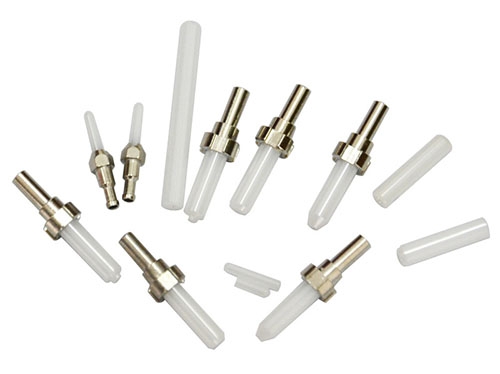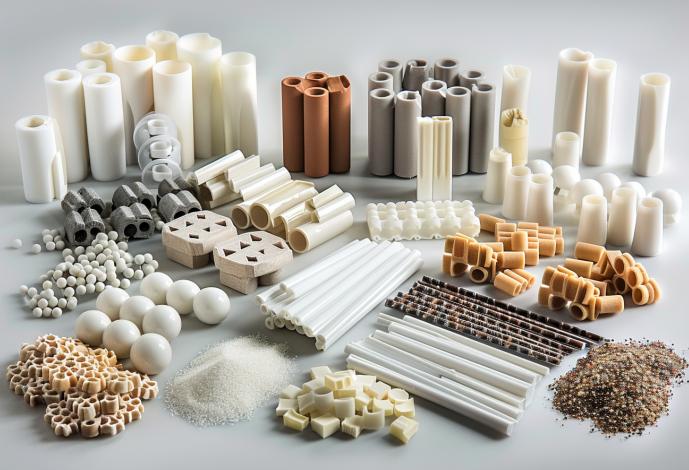Ceramic Fiber Sleeves Supplier Japan
A premier ceramic fiber sleeves supplier Japan provides some of the world's most advanced thermal management solutions. These suppliers are known for their commitment to quality and material science. Ceramic fiber sleeves are high-performance textile products. They are not rigid components. They are flexible, woven materials. Their main purpose is to provide extreme-temperature insulation. They protect industrial equipment, cables, and personnel. Industries like steel, petrochemical, and power generation rely on these materials. The reputation for quality in this market is built on material purity, high-temperature performance, and manufacturing consistency.

These textile products are a critical part of safety and efficiency. They are engineered to handle conditions where traditional insulators fail. A top-tier supplier offers a range of products. These products are designed for specific temperatures and applications. They are a key partner for any industry that operates at high heat.
What Are Ceramic Fiber Sleeves?
Ceramic fiber sleeves are high-temperature resistant textile products. They are flexible, hollow-core insulators. They are designed to be slipped over pipes, hoses, cables, and wires. Their function is to provide thermal insulation. They also protect the components underneath from heat, sparks, and molten metal splash. These sleeves are soft and pliable. They can be easily cut to length.
The Core Material: Refractory Ceramic Fibers (RCF)
The sleeves are made from yarns spun from refractory ceramic fibers (RCF). These fibers are a type of alumina-silica material. They are produced by melting and blowing or spinning high-purity minerals. The result is a mass of fibers. These fibers have excellent thermal properties.
- Low Thermal Conductivity: They are poor conductors of heat. This makes them excellent insulators.
- High-Temperature Resistance: Standard RCF sleeves can typically operate at continuous temperatures up to 1260°C (2300°F).
- Low Heat Storage: They do not hold much heat. This allows for faster furnace cycling.
- Chemical Stability: They are resistant to most chemicals. They are not affected by oil, water, or steam.
Key Performance Properties
The value of a ceramic fiber sleeve is in its performance.
- Thermal Insulation: Their primary job is to keep heat in or keep it out.
- Fire Protection: They are non-combustible. They can be used as fire barriers.
- Personnel Protection: They can be used to cover hot pipes. This prevents accidental burns.
- Splash Resistance: In foundries, they protect hoses from molten metal splash.
- Abrasion Resistance: Some sleeves are coated. This adds durability.
Reinforcement Materials
To add strength during manufacturing, the ceramic yarn is often reinforced. The type of reinforcement is important.
- Fiberglass Reinforcement: This is common. It adds mechanical strength to the yarn. Fiberglass has a lower temperature limit than the ceramic fiber.
- Stainless Steel Wire Reinforcement: For high-temperature strength, a steel wire is used. This wire (often Inconel) maintains its integrity at very high heat. This ensures the sleeve's shape.
Understanding the Terminology: Fiber vs. Solid Sleeves
It is essential to distinguish between two products that share a name. A failure to do so can lead to sourcing the wrong part. The market for "ceramic sleeves" is split into two very different categories.
The Product This Article Covers: Flexible Thermal Sleeves
This article focuses on flexible fiber sleeves. These are the soft, woven textile products described above. They are used for heat management and insulation. Their properties are thermal. Their material is an alumina-silica fiber. These are found in industrial settings like steel mills, glass plants, and refineries.
The Other Category: Precision Zirconia Sleeves
A different product also exists: the solid precision sleeve. These are tiny, rigid, hard components. They are made from a different ceramic material called zirconia. Their purpose is not insulation. Their purpose is high-precision mechanical alignment.
A comprehensive ceramic sleeves guide may explain both types. The precision zirconia sleeve is the core component in fiber optic connectors. It aligns the hair-thin glass fibers. This is a high-technology component. Its properties are mechanical, not thermal. Its tolerances are measured in sub-microns.
This precision component is sourced by technology companies. These companies operate in advanced markets like ceramic sleeves USA and ceramic sleeves Europe. The supply chain for these parts is global. It includes major manufacturing hubs that produce ceramic sleeves China. It also includes high-specification producers in markets like ceramic sleeves Germany. Growing technology sectors also rely on these parts. This creates demand in markets like ceramic sleeves supplier India and ceramic sleeves Indonesia.
Why the Distinction Matters for Sourcing
This distinction is critical. A ceramic fiber sleeves supplier Japan provides thermal solutions for heat. A supplier of zirconia sleeves provides mechanical components for data. They are not interchangeable. This article is focused only on the flexible thermal insulation sleeve.
The Role of a Premier Supplier
A top-tier ceramic fiber sleeves supplier Japan is recognized for several key attributes. These suppliers are often at the forefront of material science.
Quality, Heritage, and Manufacturing Excellence
Suppliers in this market are often leaders in high-performance materials. They have a history of producing advanced ceramics. Their products are associated with reliability. This reputation is built on strict quality control. It also comes from investment in research and development. Customers expect a product that performs exactly as specified.
Expertise in High-Temperature Applications
A premier supplier is a technical partner. They do not just sell a product. They provide solutions. Their team includes material scientists and engineers. They understand the challenges of a steel mill or a glass furnace. They can recommend the correct material.
Commitment to Advanced Material Science
The market for high-temperature materials is always evolving. A leading supplier invests in developing new fibers. This includes high-purity alumina fibers. It also includes Polycrystalline Alumina (PCW) fibers. These materials push the temperature limits even higher. They offer better performance in extreme conditions.
Key Materials Used in Ceramic Fiber Sleeves
The choice of fiber dictates the sleeve's performance. A top supplier will offer a range of materials.
Standard Alumina-Silica Fibers (RCF)
This is the workhorse of the industry. It is a blend of alumina (Al2O3) and silica (SiO2). It is highly effective up to 1260°C (2300°F).
High-Alumina Fibers
For applications that need higher temperatures, high-alumina fibers are used. These fibers have a much higher percentage of alumina. This can be 80%, 90%, or even >95%. Higher alumina content provides:
- Higher continuous temperature resistance.
- Better strength retention at high heat.
- Better resistance to certain chemical attacks.
Polycrystalline Alumina (PCW)
This is a premium, high-performance material. PCW fibers are almost 100% pure alumina. They have a different crystal structure. This makes them extremely strong and stable. They can be used at temperatures up to 1600°C (2900°F). They also have very low "creep," meaning they do not deform under load at high temperatures. These are used in aerospace and advanced furnace applications.
The Manufacturing Process
Ceramic fiber sleeves are a product of advanced textile manufacturing. The process is multi-stage.
Step 1: Fiber Production
First, the raw materials (alumina and silica) are melted. This happens in an electric furnace. The molten material is then formed into fibers. This is done by either:
- Blowing: A stream of molten material is hit with a high-velocity jet of air.
- Spinning: The molten material is spun in a high-speed centrifuge.
This creates a mass of white, fluffy fibers.
Step 2: From Fiber to Yarn
The bulk fiber is then carded. This process aligns the fibers. They are then spun into a yarn. This is a continuous strand of ceramic fiber. This is the stage where reinforcement is added. The fiberglass or steel wire is twisted in with the ceramic fibers. This creates a strong, workable yarn.
Step 3: Braiding and Weaving
The yarn is now ready to be made into a sleeve.
- Braiding: This is the most common method for sleeves. Multiple strands of yarn are braided together. This process creates a seamless, hollow tube. The tightness of the braid determines the sleeve's density and flexibility.
- Knitting: Some sleeves are knitted. This process creates a very flexible, stretchable sleeve.
- Weaving: This process is used to make flat tapes and cloths.
Step 4: Coatings and Treatments
A "raw" ceramic sleeve is effective but can be dusty. It can also be prone to abrasion. To improve performance, sleeves can be coated.
- Heat Treatment: The sleeve is heated. This burns off the organic binders used in the yarn-spinning process.
- Vermiculite Coating: This is a common, dark-colored coating. It adds abrasion resistance. It also increases the temperature rating slightly.
- Silicone Coating: A thick layer of silicone rubber is applied. This makes the sleeve waterproof and oil-proof. It is excellent for protecting hoses from a "pinhole" fluid spray.
Key Applications and Industries
A ceramic fiber sleeves supplier Japan serves a wide range of heavy industries. The product's versatility makes it invaluable.
Iron, Steel, and Foundries
This is a primary market. Ceramic fiber sleeves are used everywhere.
- Molten Metal Splash Protection: Hoses and cables near a furnace are covered. The sleeve protects them from catastrophic failure.
- Ladle and Tundish Insulation: They are used as seals and insulators on equipment.
- Furnace Door Seals: Braided ropes and sleeves are used to seal furnace doors.
Glass and Ceramics Manufacturing
The glass industry operates at high heat.
- Roller Wraps: In a glass annealing lehr, rollers are wrapped with ceramic fiber. This protects the hot, soft glass from the metal rollers.
- Furnace Insulation: They are used for seals and gaskets.
- Protection: Sleeves protect sensors and cables near the hot end.
Petrochemical and Power Generation
These industries have miles of high-temperature piping.
- Pipe Insulation: Sleeves can be used to insulate small-diameter pipes.
- Cable Protection: They are used to protect critical control cables in hot areas.
- Flange and Valve Covers: Custom covers are made from ceramic fiber.
Aerospace and Automotive
These industries demand lightweight, high-performance insulation.
- Heat Shields: Ceramic fiber is used to make heat shields for engines.
- Exhaust Wraps: High-performance exhaust systems are wrapped. This keeps heat in the exhaust.
- Fire Barriers: The material is used as a fire barrier in aircraft and race cars.
Quality, Safety, and Handling Standards
Sourcing high-performance insulation requires a focus on standards.
Understanding International Standards
Suppliers often test their products to international standards. For example, ASTM C892 is a standard specification for high-temperature fiber blanket insulation. While for blankets, its principles apply to the material. A good supplier provides data based on recognized test methods. This includes thermal conductivity data and temperature ratings.
The Importance of Safety (RCF Handling)
Refractory Ceramic Fibers (RCF) have specific handling requirements. The fibers are a respiratory irritant. Long-term exposure to airborne fibers is a health concern.
- Safety Procedures: Workers handling RCF should use personal protective equipment (PPE). This includes respirators, gloves, and eye protection.
- Safe Work Practices: Work areas should be well-ventilated. Cutting should be done in a way that minimizes dust.
- Supplier Guidance: A responsible supplier provides Safety Data Sheets (SDS). They will also offer guidance on safe handling.
Authoritative bodies like the Refractory Ceramic Fibers Coalition (RCF Coalition) provide detailed safety information.
What to Ask a Supplier
When you contact a ceramic fiber sleeves supplier Japan, be prepared to ask specific questions.
- What is the continuous operating temperature?
- What is the melt temperature?
- What is the material composition? (RCF, High-Alumina, PCW)
- What is the reinforcement material? (Glass or steel)
- Can you provide a full Safety Data Sheet (SDS)?
- What coatings are available?
The Future of High-Temperature Insulation
The market for thermal insulation is growing. This is driven by two main factors: energy efficiency and new materials.
New Material Developments (Bio-Soluble Fibers)
Due to the health concerns of RCF, new fibers have been developed. These are called "bio-soluble" fibers. They are also known as Alkaline Earth Silicate (AES) wools. These fibers are designed to dissolve in the human body. They offer similar thermal performance to RCF. They are becoming the standard in many regions. A top-tier supplier will offer these bio-soluble alternatives.
Growing Demand for Energy Efficiency
As energy costs rise, industries are investing in insulation. Better insulation on pipes and furnaces saves a huge amount of money. This drives demand for high-performance materials. The American Ceramic Society and other global bodies are at the forefront of this material science.
Conclusion: A Partner for Extreme Environments
A ceramic fiber sleeves supplier Japan provides an essential, high-technology product. These flexible textiles are the key to operating safely and efficiently at high temperatures. We protect critical equipment. They save energy. They keep personnel safe.
Choosing a supplier is not just about price. It is about quality, material science, and technical support. A premier supplier is a partner. They provide the expertise to solve the most difficult thermal challenges.
In This Article
- 1 What Are Ceramic Fiber Sleeves?
- 2 Understanding the Terminology: Fiber vs. Solid Sleeves
- 3 The Role of a Premier Supplier
- 4 Key Materials Used in Ceramic Fiber Sleeves
- 5 The Manufacturing Process
- 6 Key Applications and Industries
- 7 Quality, Safety, and Handling Standards
- 8 The Future of High-Temperature Insulation
- 9 Conclusion: A Partner for Extreme Environments
 English
English 中文
中文





